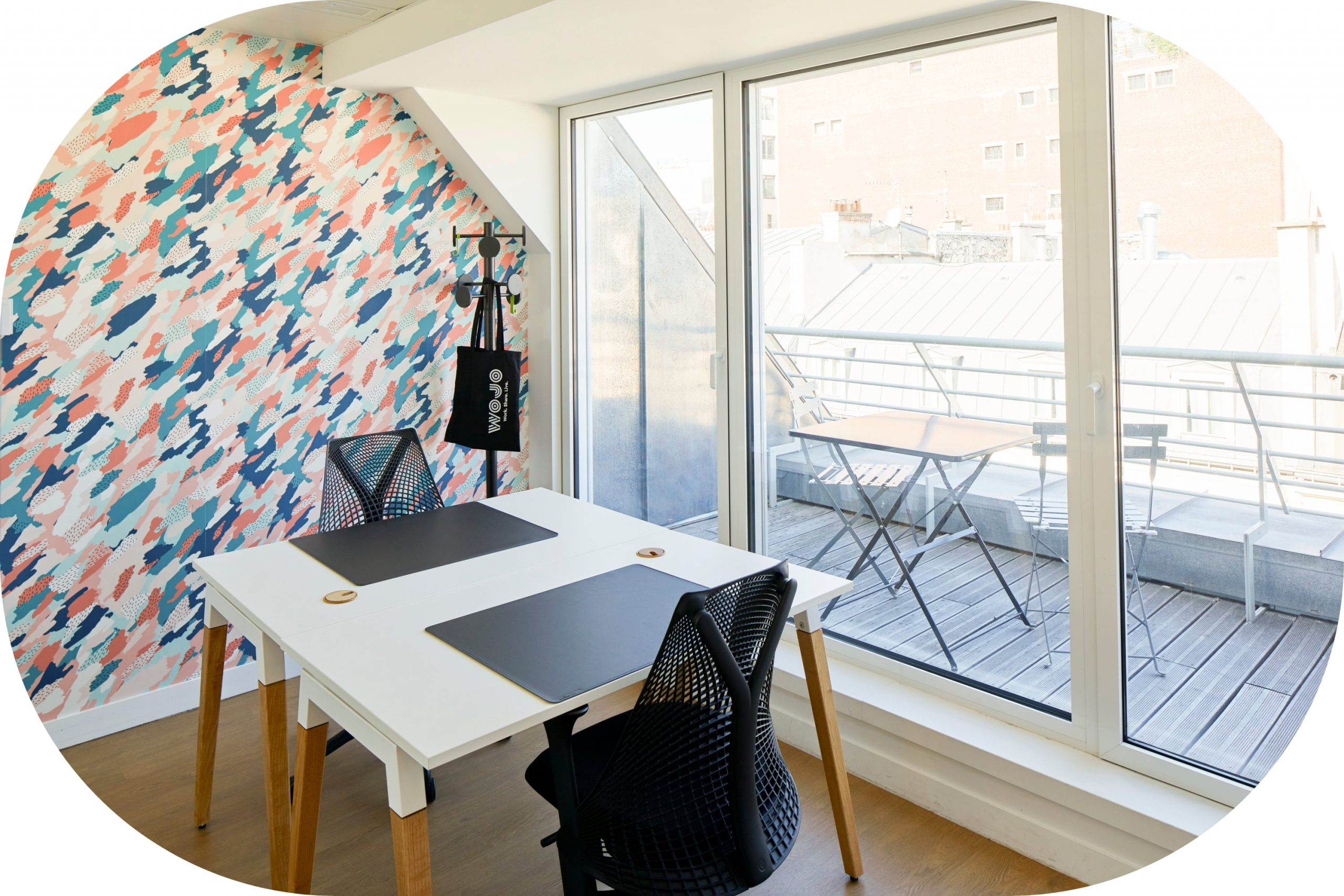Faced with the constant solicitations inherent to our ultra-connected lifestyles, our ability to concentrate is shrinking. On the dock, the Internet, digital distractions and their procession of notifications that fragment our attention. To resist, to prove that we exist by providing quality work, deep work is our best ally. Discover why, and especially how to reach this state of hyper concentration defined by Cal Newport, and release the best of your abilities. A whole program!
Deep work : definition
Deep work is a state of maximum concentration that allows you to deliver efficient and complex work by pushing our cognitive abilities to their maximum. Cal Newport, a professor of computer science at Georgetown University, theorized the concept in his book Deep Work: Regaining Focus in a Distracted World (Alisio ed., September 2017). He later expanded on this theory and his advice in other books that delve deeper into the issue, such as Succeeding in Life Through Digital Minimalism.
The author insists on the importance of eliminating all distractions in our activities, and in particular all communication tools (telephone, emails, social networks, collaborative platforms, etc.) in order to allow the brain to function at its maximum. Ideally several hours a day, and at least 1 hour to 1h30 in a row to obtain significant results.
Deep work, a state that is increasingly difficult to achieve
Going several hours without checking emails, social networks and other notifications seems to go against the unbridled connectivity associated with our lifestyles. The use of social networks constitutes a vortex that favors the loss of time, even of meaning. In a world of work where immediacy and reactivity are valued, and where there are constant solicitations, the approach is bold, even courageous! And yet, necessary.
Because the brain is not designed to multitask. Taking “just a minute” to respond to an email, a Teams message or a colleague asking you a question is enough to lose track of the task you were doing before. An American study showed that after an interruption, it sometimes took more than 20 minutes (yes, 20!) to refocus. So if in one hour you check your phone twice, answer an email and log into a social network once… you’ve lost an hour of concentration. The quality of your work is likely to suffer, with a lack of depth, or even coherence.
When deep work calls for deep work
The brain works like a muscle. The more it is used to fragmenting its attention, the more difficult it will be to reach a state of deep concentration. On the other hand, if you train it to stay focused on one subject for long periods of time, it will become easier and easier to reach that state. It’s a bit like sports: the hardest part is getting started, and then the habit becomes easy.
And like sport, deep work and the associated hyper concentration bring a form of serenity. You stimulate your attention, your creativity, by losing the notion of time, without having the feeling of making a particular effort. This state of “flow” where everything seems easy and within your reach is very gratifying, especially since it leads to significant work, which stands out by its quality.
These stars who practice deep work
Many iconic success stories are no exception, and have adopted deep work as their work philosophy. When he ran Microsoft, Bill Gates was known for his regular two-week retreats to a cabin deep in the woods. No email, no phone, not even a human being nearby. He devoted this time of isolation to thinking about future innovations and investments. Given Microsoft’s results, this deep work proved to be fruitful.
JK Rowling also communicated about a complete diet of social networks and human contact during the writing of the last Harry Potter. She chose to isolate herself for six months in a hotel room, without contact with the outside world during her work days in order to complete the end of her saga.
Anti-concentration traps
As you can see, “deep worker” is a success factor when we fully mobilize our capacities. But what prevents us from doing so on a daily basis? Here are some examples of the problems that hinder our concentration:
- Showing your productivity by multitasking at work;
- Appetence for immediacy and ease: it is more rewarding for our mind to collect likes on a LinkedIn or Instagram post than to wait for a feedback on a long term file that required months of work ;
- Multiplication of work tools within organizations, which force to constantly switch from one to another;
- Fragmentation of the day with a multitude of meetings that are not always useful (but difficult to refuse when our presence is requested). Too many hours are spent in unnecessary meetings according to the employees.
- Breaks at a time not always chosen vs. our concentration process (but difficult to refuse when a colleague proposes to have a coffee together);
- The need to provide an immediate response to messages (email, internal messaging, etc.) to show involvement and responsiveness… 42% of employees and 50% of managers feel the need to provide an immediate response to their messages (Asana 2022 study).
And we forget. All this contributes to fragmenting attention and concentration, and makes it impossible to work in depth, which is necessary to reach a higher level of quality.
Shallow work, the sworn enemy of deep work
In addition to all these sources of distraction, we have a natural tendency to practice “work about work”. That is to say, activities dedicated to the organization of work, logistics, coordination of projects which, if they are necessary for the success of the said projects, are detrimental to the intensity of concentration. The problem is that we find ourselves trapped in a dynamic of “shallow work”, consisting of easy but time-consuming tasks.
Procrastinators know them well. They are all those small activities that are easy to accomplish in a mechanical way, which avoid tackling the main and strategic activity that requires deep concentration. The theory of deep work does not propose to eliminate them, of course, at the risk of harming the smooth running of organizations, but to limit the time spent on these superfluous tasks in order to focus on those with high added value. But how to do this?
The 4 philosophies of Deep Work
Cal Newport details in his books four philosophies of work organization. Each person can then choose the one that best fits their lifestyle and way of working to go into “deep work” mode. These different methods are not necessarily meant to be taken literally in your own organization. They are rather useful to identify the type of rhythm that would suit you best, according to your personality and your job. Once this is done, it will be necessary to adopt good practices to transform the trial into a habit.
Monastic philosophy
Fasten your seatbelts, we are talking about the most extreme approach to deep work. The idea: cut yourself off from all distractions for long periods of time. For example, decide for a week that you will not answer any messages to devote yourself to deep work. Seductive but not necessarily easy to put in place when you are an employee of a company.
Bimodal philosophy
As its name suggests, working in deep work bimodal means alternating “normal” life and monastic life. In concrete terms, Cal Newport proposes to divide his time between easy activities half of the time, and to focus intensely on complex tasks the other half of the time. This half-time dedicated to deep work can be done away from the office, in spaces that promote concentration and calm.
Rhythmic philosophy
Probably the easiest to set up, at least to start with, is to set regular time slots in your day for deep work. For example, you reserve a time slot from 2:30 to 4:30 pm for deep work, and you go about your business the rest of the time.
Journalistic philosophy
The need to write articles quickly requires journalists to switch to deep work mode at any time, and for sometimes short periods between two meetings or conferences. This approach requires the development of a strong mental agility allowing to switch from one mode to the other in the blink of an eye.
9 good practices to make deep work a habit
As individuals and as organizations, encouraging deep work is not that complicated. We all have the capacity to do so. The approach requires a rethinking of processes and work methods with the objective of gaining in efficiency, and ultimately becoming a source of well-being for the teams. If you find this difficult, remember that “motivation gets you started, but it’s the habit that keeps you going. Duly noted.
1 – Organize your time
Rule number 1 to make deep work possible: get organized. That is to say, plan your working day by reserving time for concentration, others for meetings/exchanges, and finally for logistic tasks and emails/messages. Many methods offer tools to find the organization that suits you.
Some may prefer to block out one or two days in their week to work in depth, consolidating all meetings and responses to messages the rest of the time. Others will break up their day into blocks to group similar activities and accomplish them more quickly, while freeing up two-hour slots to focus intensely on important matters.
When you schedule a deep work session, decide at the same time which task you will handle during this session. You will gain in efficiency and relevance.
2 – Create conditions conducive to concentration
You can have the most organized agenda possible, but if you are in a noisy environment where distractions and stimuli are frequent, you will not be able to concentrate, or you will have to work very hard. The ideal is therefore to isolate yourself.
For example, by reserving a meeting room to work in peace and quiet. Or by deciding to work some days from a coworking space offering quiet spaces, like Wojo. Our sites mix private offices, lively spaces dedicated to conviviality, and quiet coworking spaces where silence is king… and concentration queen! This solution is very much appreciated by telecommuting employees. They benefit from optimal conditions for quality work in a space close to home.
3 – Neutralize distractions and notifications
You’ve neutralized the social distractions? Now you have to eliminate digital distractions, which is no easy task. Before starting a deep work session, put your cell phone on airplane mode, close your mailbox, your messaging system and your social networks… Take a deep breath and tell yourself that the world won’t stop turning if you answer in two hours instead of two minutes, and get started! For the rest, we reserve time slots in our day where we can lose ourselves in our news feed on social networks and answer all our messages in an efficient and quick way.
4 – Ritualize the transition to “deep work” mode to create a trigger in the brain
All of the above actions participate in a form of “deep work” ritual that helps the brain to enter a state of hyper concentration. You can go even further by creating a real ritual that will allow your neurons to associate a habit with the activation of the deep work mode. You can for example:
- Allow yourself one to two minutes of meditation;
- Focus on your breathing for a few cycles;
- Lighting a candle;
- Play a piece of music;
- Tidy up your desk to make a clean sweep before your eyes and in your mind;
- Prepare you a hot drink,
- etc.
Each person has his or her own way of ritualizing the trigger that suits him or her to create a concentration bubble.

5 – Eliminate and regroup futile tasks (shallow work)
To do this, analyze your tasks using the Einsenhower matrix to determine which ones are :
– Important and urgent
– Important but not urgent
– Not important but urgent
– Not important and not urgent
Once you have completed this chart, prioritize the important and urgent tasks in your work organization, delegate the not important and urgent ones, and eliminate the not important and not urgent ones. You will be able to devote a later session of deep work by working intensively on the important and non-urgent tasks and thus treat them in a qualitative way.
6 – Redefining the modes of communication
Within organizations, there are many ways to promote maximum focus and maintain its intensity. For example:
Encourage asynchronous communication, by inviting employees to turn off their notifications while scheduling time slots for responses.
- Clarify roles and responsibilities on projects to reduce the number of meetings and coordination work.
- Set aside time slots for meetings and others for individual work. For example, all project meetings should take place between 9:30 and 11:00 a.m., to leave the rest of the day free for quiet work
- Centralize internal activities and communications on a single tool, in order to avoid the dispersion of information… And concentration.
7 – Save yourself unnecessary meetings
Learn to say “no” to meetings if they are not essential to the progress of your work. Two tools can help you do this:
- Make sure that the meetings are useful by requesting that an agenda be prepared and sent to the participants in advance. It will allow you to evaluate the urgency (or not) of the meeting, and the presence of actions to be dealt with (or not) during this meeting.
- Evaluate the relevance of meetings, or at least your attendance at them. List the meetings you attend and evaluate their interest and usefulness with a score from 1 to 5. From 3, it is preferable to decline them.
Read also: 8 tips for successful remote brainstorming
8 – Set and track goals
Because practicing deep work requires organization and ritualization, setting goals to accomplish through deep work helps to keep this habit. For example, decide that you will have two sessions to finish writing that RFP, decide that you will have identified three new innovation concepts to propose to your manager at the end of the day, etc. You can post them above your desk, or write them down in your calendar as you set aside time for deep work. Cal Newport suggests creating a daily planner on which to record your goals and check off those that are met. Make sure you choose measurable and precise goals, which are easier to follow and therefore more motivating. Why not use the SMART method to choose them? SMART as in
- Specific
- Measurable
- Achievable
- Realistic
- Temporally defined
9 – Don’t forget to take breaks
Our brain has tremendous capacities… but, like everyone else, it needs a break to recharge its batteries. During the deep work phases, we allow ourselves a short break every 45 minutes or so. However, there’s no question of turning on your phone or reading your e-mails, so we take advantage of this time to take a few steps, listen to a piece of music… or any other activity that doesn’t take us out of our state of concentration.
When organizing your work day, don‘t forget to set aside time for relaxation. Walking at lunch time, meditation or nap, sport… good cognitive performance also depends on a global balance integrating sport, rest and conviviality. We also take advantage of social interactions outside of the deep work periods to get inspired and exchange ideas.
The last word
As you can see, deep work is about making the most of our abilities… and fighting against our tendency to look more and more like a goldfish. For organizations, promoting deep work is a great opportunity to bring out differentiating concepts and projects, because they are the result of deep thinking. Creating a work organization that is conducive to deep work, and training employees in new communication and meeting methods are the two pillars of the approach.







